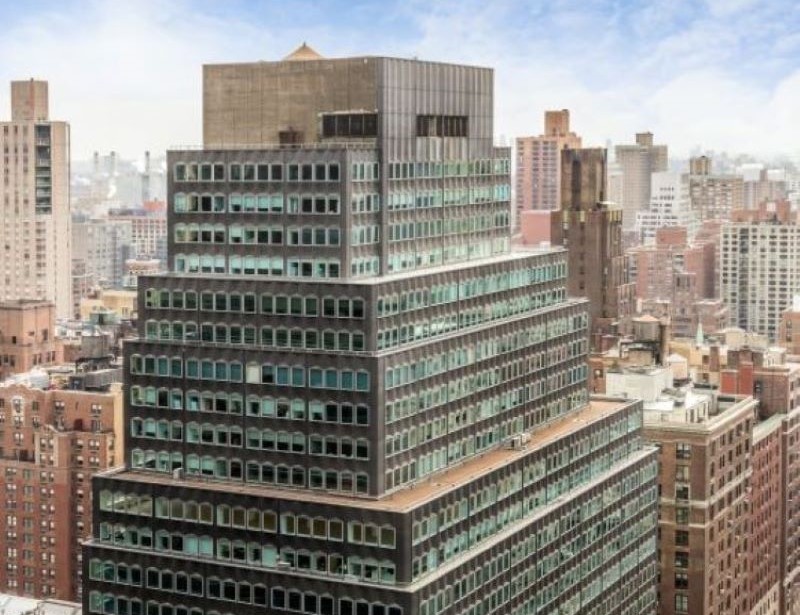What’s New in Health Care as Sector Shifts to Outpatient Care
Caddis' Jason Hinkel discusses the impact of increased interest in the sector and touches on the transformations expected in the year ahead.
The health-care real estate landscape continues to experience changes in its composition given the ongoing shift from inpatient to outpatient facilities, as well as the pertaining new care strategies. This consumer-driven change, resulting from the need for more accessible locations, has led to even more interest in the sector. Even retailers such as Walgreens, Walmart and Amazon are planning to expand into health care.
Caddis Vice President of Property Management Jason Hinkel pointed out that given these circumstances, asking prices are expected to remain strong, while the construction of new facilities is anticipated to move closer to patient communities. In the interview below, Hinkel shares his views on how consolidation in the sector will look like and names the biggest challenge in health-care real estate this year.
READ ALSO: Health Care Shows Strong Vitality
What changed in the past year for the health-care real estate sector?
Hinkel: Health-care real estate fundamentals remained strong in 2019, marked by increased demand for health-care services, as the population ages, as well as the movement of services to outpatient settings. Coupled with low interest rates, demand from foreign capital and new entrants into the sector, cap rates held steady to drive strong pricing. New development did little to impact the already low vacancy rates despite the addition of more than 20 million square feet of space in 2019. Construction of new facilities continues to move to off-campus locations that are conveniently located near patient populations.
Was there anything in particular that surprised you about the evolution of recent trends?
Hinkel: I was following two things throughout the year and was curious to see how they unfolded: the impact of technology and telehealth, as well as the potential economic slowdown. My conclusions are that continued speculation on the impact of technology and telehealth did little to impact the overall volume of new development. Also, speculation about a recession at the beginning of 2019 waned as the year progressed.
With the continued shift from inpatient to outpatient care, which types of health-care properties do you think will be more in demand in 2020?
Hinkel: The overall shift from inpatient to outpatient care is being seen in the move to prime retail locations. Increased competition is driving providers to locations that are close and convenient to their patient base. Technology gains allow procedures previously performed in the hospital to be performed in outpatient settings, and outpatient locations will be more likely to feature ambulatory surgical procedures, along with primary care and urgent care offerings. As the move to consolidation continues between hospitals and providers, this may take the form of single-tenant, net leased buildings. With institutional credit tenants being the typical occupant, pricing should continue to be strong.
What will be the biggest challenges for the health-care real estate sector going forward?
Hinkel: Perhaps one of the biggest challenges will be the repurposing of existing on-campus medical office product, which has been in great demand. Many of these properties are older, having been developed prior to the drive to off-campus patient-centric locations. Often, these buildings are divided into smaller spaces, making it difficult to house practices that are growing through consolidation. In order to maintain the relevance of these, owners should be prepared to relocate existing tenants to create larger blocks of space, as well as make capital investments to repurpose these properties.
READ ALSO: The Magnetism of Medical Office Buildings
What should health-care property managers focus on more at this late point in the economic cycle?
Hinkel: Patient-focused fundamentals should still dominate the property management agenda. With patent satisfaction playing a larger role in reimbursement, maintaining cleanliness, convenient parking and wayfinding are more critical than ever. A sound property management program will need to strike the balance between keeping systems operating in peak condition and enhancing the curb appeal to both patients and tenants in order to keep a property relevant.
How do you think health-care leasing activity will play out in 2020?
Hinkel: Overall vacancy remains below 10 percent, and overall leasing is expected to keep pace with new inventory that is well located. With little disruption expected from health-care legislation and financial markets in an election year, overall demand for well-positioned and well-maintained properties should remain solid. As noted earlier, demand for space in off-campus properties is likely to be strongest as providers seek access to patient populations.
What are, in your opinion, the health-care investment markets to watch in 2020?
Hinkel: Southeast markets continue to be strong—for example, in the Carolinas and Florida—and we are seeing more growth tracking the re-emergence of Rust Belt cities. The New York and Boston metropolitan areas continue to have low vacancy and solid rent growth. With the expansion and merger activity among health systems, some of the third tier markets may be worth watching as systems with strong credit acquire their smaller counterparts.
Tell us a bit about Caddis’ strategy in the following quarters.
Hinkel: In 2020, we will continue to seek both development and acquisition opportunities to expand our portfolio. With a portfolio now covering the eastern half of the country, and multiple acquisitions on the East Coast, Caddis opened a mid-Atlantic regional office in 2019 to oversee its portfolio. We will be looking at opportunities to grow our presence here in both the medical office and senior housing sectors.
As our portfolio grows, we are looking at ways to increase efficiency in our management structure. Some of this is happening through service agreements with vendors that have a national footprint. Internally, we are placing greater emphasis on standardizing training and procedures to build redundancy and support for our team members in the field.









You must be logged in to post a comment.